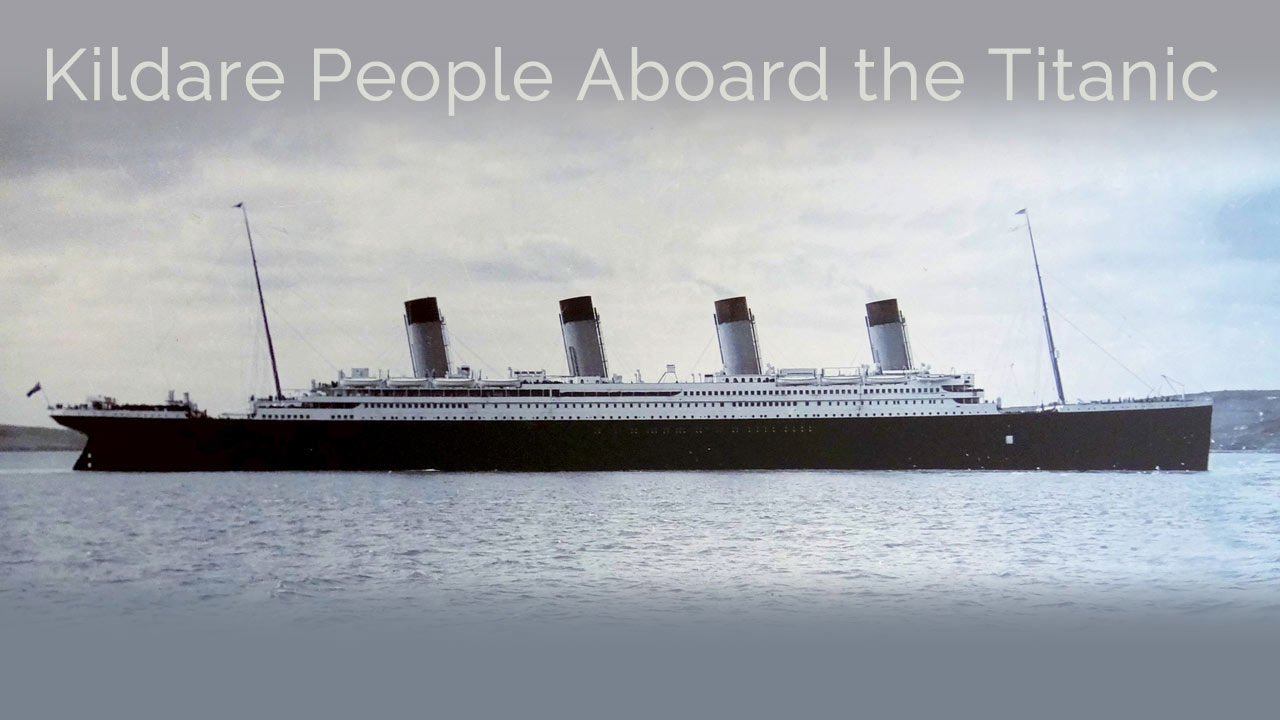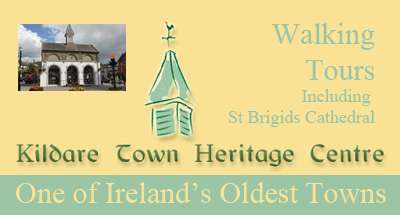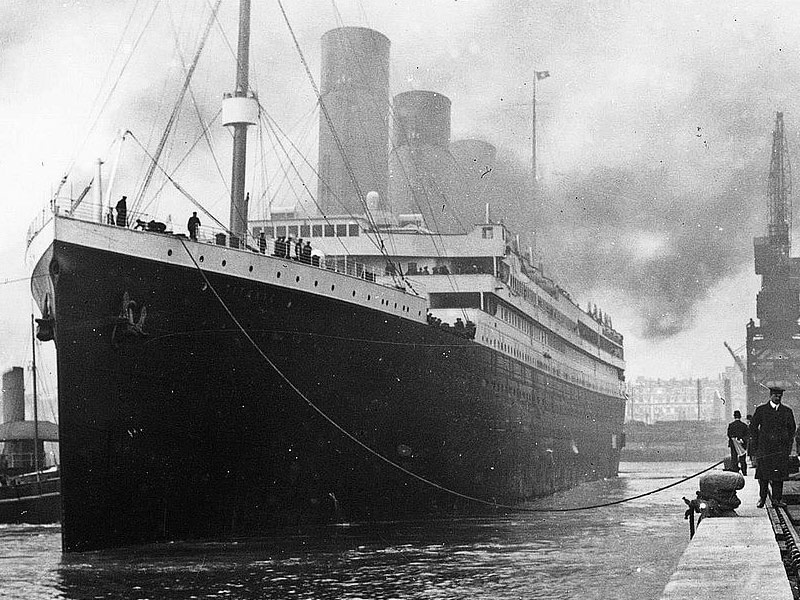Lost: James Kelly
On 23 April the Mackay–Bennett search vessel picked up the body of
Leixlip man James Kelly. The Mackay–Bennett’s crew was so overwhelmed by
the scope of its recovery that it was decided to bury some bodies at
sea. Some 116 bodies were buried at sea and 190 brought back to Halifax,
Nova Scotia. James Kelly’s body went back into the unforgiving Atlantic
Ocean the following day when he was buried at sea in canvas sacking.
His death was recorded as: ‘Body No. 70 Male estimated age 34. Hair and
moustache light. Clothing – Dark suit, vest and trousers; white socks;
black boots. Effects – Beads, left on body; comb; knife. No marks. Name –
James Kelly.’
James Kelly was actually older than thirty-four. He was forty-five
and his death plunged the family at home in Co. Kildare, into financial
crisis as well as the deepest grief. Mrs Kate Kelly was struggling to
feed the rest of the family. There was some money sent home from the
eldest son, Tom, who was a sergeant in the Connaught Rangers, and
mill-workers Catherine (18) and Mary (16) also handed up money, but this
was not enough. There were three other children – Bridget (13) William
(12) and James (7). James Kelly senior was emigrating to America to join
his eldest daughter, Margaret (20), and planned to then send for the
rest of the family when he gained employment.
James Kelly was born in Co. Kildare in 1867 and in the 1901 Census
his employment was entered as a road labourer. He married Kate Goff on
31 January 1887 in Leixlip. Kate was born in Leixlip in 1863. In the
1911 Census James Kelly was recorded as a general labourer, who could
not read, which was not uncommon at the time. The Kelly’s lived in a
two-roomed house in the town. Kate Kelly applied for money from the
Distress Fund and at a meeting of the Celbridge Board of Guardians in
May was awarded 4s per week as relief. The sum of £12 had been
subscribed towards the fund from the local church collection the
previous Sunday.
The entire Kelly family later emigrated to America to join Margaret
and other relatives. Margaret had been employed at the Strouse-Adler
garment company in New Haven, New England, for two years and had sent
the fare home (Ticket number 330911 – £7 12s 4d, plus 4s extra) for her
father to join her in the United States. He planned to send for his wife
and children in a few months when he was employed and had lodgings for
them. The family had sold all their possessions in readiness for their
move to America and with the death of James decided to go ahead with the
original plan. Margaret’s company volunteered to be responsible to the
immigration authorities that the family should not become public charges
and they were admitted to the United States in June 1912. A huge crowd
greeted the family at Union Station, New Haven, with banners saying ‘Welcome – Titanic Kellys.’
A specially-formed committee advanced $625 to pay for the passage
and to meet the expenses of establishing a new home for the Kelly’s. Two
of Margaret’s younger sisters, Catherine and Mary, were employed by the
garment company, while the three remaining children were enrolled in a
local Catholic school.
Further grief was visited on the family four years later when Sgt
Tom Kelly died of wounds received in battle on 23 January 1916 in
Mesopotamia. A military memorial in Basra, Iraq, bears his name. His
sisters Margaret, Catherine, and Bridget all lost their husbands at an
early age. James Kelly’s widow, Kate, died in 1955, aged ninety.
Lost: Patrick Gill
On Saturday 6 April 1912 the recruitment of the general crew for all departments on board the SS Titanic began in the union hiring halls in Southampton. Following a prolonged coal strike that had idled most ships, positions aboard the Titanic were highly sought after. Patrick Gill (38) was hired as a ship’s cook. Originally from Co. Kildare, Patrick Gill (possibly born in Enfield) lived at Waverly Road, Southampton, with his English wife. Patrick Gill was lost at sea during the disaster, but there are no records of his death. Of the fifty-one men listed as ‘Attendants, Barbers, Waiters, Ship’s Cooks, etc,’ only two survived. Nearly forty of these were Italian nationals employed as waiters from Gatti’s of London to work in the á la carte restaurant. None of these waiters survived. Patrick Gill is on this list as a ship’s cook. Only two of the dozen or so of his workmates survived.
Saved: Norah Murphy
Norah Murphy (34), from Sallins, was travelling with Michael
McEvoy, a nineteen-year-old Co. Laois born workman with whom she had
recently taken up. Norah had been working as a “nurse domestic servant”
in the household of Sallins publican John and Mary Healy and their six
children. She and Michael McEvoy were travelling on the same ticket,
which cost £15 10s and was purchased in Dublin by Michael, but were
accommodated at opposite ends of the Titanic. Norah had signed aboard as
a spinster, but local folklore in Sallins suggests she had a chequered
past. She was born in Dublin City and it was rumoured she was married,
though her entry in the 1911 Census was as a single woman.
In the chaos of the early morning of 15 April Norah was bundled
into a lifeboat while Michael’s fate at the other end of the ship is
unknown. His body was never found. Norah’s destination was originally a
boarding house on East 50th Street, but following her rescue by the
Carpathia indicated to customs and immigration officers that she
intended to seek refuge at the Irish Immigrant Girls Home at 7 State
Street, New York. Here Norah received some monetary assistance from the
religious administrators of the home and also was given relief of $100
from the American Red Cross.
Norah Murphy later went to work for the father of American tennis
star Karl Behr as a domestic. The position apparently had been arranged
by Karl, a fellow Titanic survivor. He was saved in lifeboat 5, in which
it is possible Norah was also an occupant, as the classes remained
segregated on the Carpathia. Of the 709 third-class passengers only 175
were saved, compared to 198 of the 317 first class passengers and 112 of the 258 second class passengers saved.
Lost: Edward Pomeroy Colley, Dr William F. N. O’Loughlin, Ernest Waldron King
Edward Pomeroy Colley was born in Dublin in 1875 into a
distinguished family with ties to Co. Kildare – Viscount Harberton
(Ernest Arthur George Pomeroy), and Baron Harberton, of Carbury.
Edward’s father, Henry Fitzgeorge Colley, was a magistrate and landlord,
married to Elizabeth Isabella Wingfield. Edward was an engineer and
land surveyor. During the Klondike Gold Rush he opened a mining
brokerage firm in Vancouver and successfully speculated in mining
stocks. Edward had business interests on both sides of the Atlantic and
frequently travelled between Dublin and a home on Vancouver Island in
Victoria’s affluent English Bay neighbourhood. He had been in Ireland
for Christmas 1911 and was returning to Canada aboard the Titanic.
On the night of the sinking he attended a concert in the first
class reception area on D Deck and retired to his cabin just after 11
p.m. He died on the morning of his thirty-seventh birthday. In the weeks
thereafter, several women wrote to his family in Ireland claiming to
have been his girlfriend or even fiancée. Reportedly he was one of the
heroes who sacrificed his life for others in the disaster.
Dr William F. N. O’Loughlin, senior surgeon on board the Titanic
was also lost at sea. Born in Tralee, Co. Kerry, in 1850, O’Loughlin
gained his medical licence in 1869, but as he attended the
Catholic University he could not obtain a medical degree, as his university
had neither public endowment, nor a charter from the monarch enabling
her to confer degrees. With his license to practise O’Loughlin began
work in a dispensary medical service in Clane, Co. Kildare. He stayed in
Kildare for eighteen months and then left to join the White Star Line
when he was just twenty-one. William O’Loughlin was last seen at his
post near the first-class entrance. Reports said he was resigned to his
fate and had refused to put on a life jacket.
Standing with Dr O’Loughlin were a number of Irishman, including
assistant purser Ernest Waldron King (28) from Clones, Co. Monaghan. His
father was Rev. Thomas Waldron King, the Church of Ireland rector at
Currin, Clones, Co. Monaghan, who with Mrs King, was in charge of the
Straffan Estate Schools for many years. Ernest had received his early
education at Straffan. He had been unemployed for a year before he
secured work aboard the Titanic and signed on to the liner on 9 April.
He is buried in
Fairview
Cemetery in
Nova Scotia , where 121 victims of the Titanic are interred. There
is an inscription on Waldron King’s headstone which reads: ‘Erected by
Mr J. Bruce Ismay to commemorate a long and faithful service.’
Kildare Observer 27 April 1912
Private John T. Young (33), based on the Curragh with the Connaught Rangers, was so overcome with grief at the loss of his younger brother Francis (30), on board the Titanic, that he shot himself. John Young had been a corporal and had recently been reduced to private. As a store man he slept alone in the store where he had access to a carbine which he used to inflict the mortal wound. The Young’s were natives of Castlebar, Co. Mayo.
The Rescuers
The brother of Newbridge-born crystallographer Kathleen Yardley
Lonsdale, Fred Yardley, was one of the earliest wireless operators and
apparently was the person who received the last signals from the
Titanic.
William Fitzpatrick, the son of Thomas and Deborah Fitzpatrick,
Lullymore, was a sailor on board the Cunard liner Carpathia which
rescued 705 Titanic survivors. The Carpathia, sailing from New York, was
the first ship to learn of the Titanic’s plight. She was torpedoed and
sunk by a German U-boat in July 1918, with a loss of five crew members.
One of those whose expert opinion was asked by the Inquiry was the
Artic explorer, Kildare-born Ernest Shackleton. He, of course, would
have had great knowledge of travelling through ice-packed seas. In
January 1913 it was revealed that over $8 million in compensation claims
had been filed by Titanic survivors and families against the White Star
Line.
Sources
Kildare Local Studies and Genealogy Department, Newbridge.Census of 1901 & 1911.
Kildare Observer
The Irish Aboard the Titanic. Senan Molony. Dublin 2000.
The Riddle of the Titanic. Robin Gardiner & Dan Van Der Vat. London 1995.
Titanic. A Journey Through Time. John P. Eaton & Charles A. Haas. Somerset 1999.
Originally published on the 28 May 2009 on the kildare eHistory blog
www.kildare.ie/ehistory/index.php/kildare-people-aboard-the-titanic/
James Durney is the County Kildare Historian in Residence for the Kildare Decade of Commemorations. Back To The Heritage Homepage





